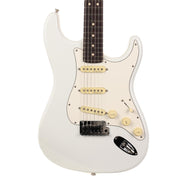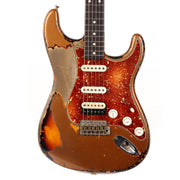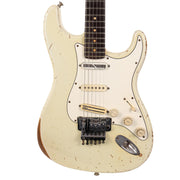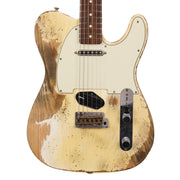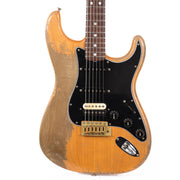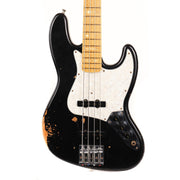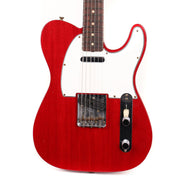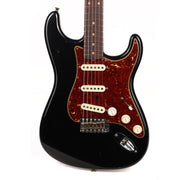Factory Tour: Fender Custom Shop Acoustics, Part One
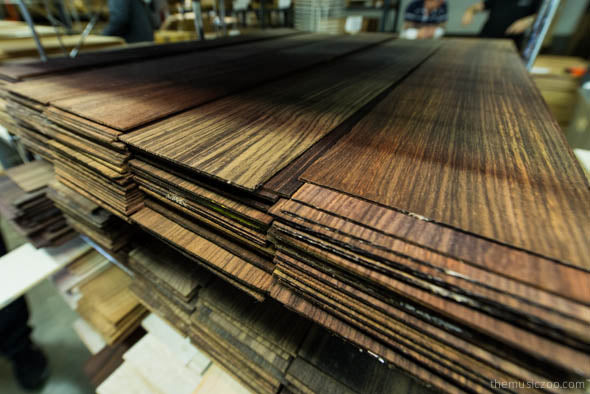
Factory Tour: Part One Part Two Part Three
Just days after the 2013 Snowpocalypse called Nemo dumped literally feet of snow on the east coast, we found ourselves fleeing our relatively slushy New York City home and heading straight into the arctic wilderness of Connecticut. Why? We had an invitation from Fender Custom Shop to be the first dealer to ever tour their new Fender Custom Shop Acoustic factory in New Hartford. We learned a couple of important things. First, folks in Connecticut know how to plow the hell out of a road. Second, the guitars we will be seeing and strumming coming out of this gorgeous 1849 brick factory building will be, without a doubt, the very best acoustic guitars ever to wear the word “Fender” on the headstock.
For many years Fender’s acoustic guitar line was composed mainly of affordable units imported from overseas and designed to hit a price point. Under the direction of master luthier Ren Ferguson, these new guitars are a whole different ballgame. The Music Zoo is thrilled to be a part of this rebirth of Fender acoustic instruments, and it all starts with a tour. So let’s get started shall we?
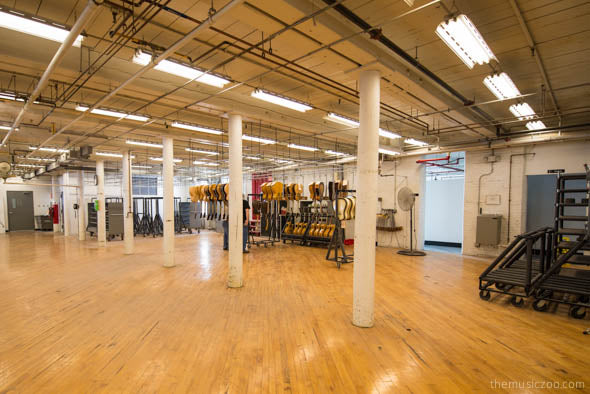
Let’s start with the building itself. It’s an enormous, labyrinthian place that is older than the city of Los Angeles. See those hardwood floorboards? Ancient maple six inches thick. We joked that we would love to make some necks out of it; apparently we weren’t the first visitors to say that. The place is just chock full of vibe and history. We could tell that those who work here they enjoy their place and what they do here.

This is Darren Wallace. He’s the engineering manager of the factory who gave us the tour. Notice that he is wearing a Guild shirt – that’s because parent company Fender has nestled their new Custom Shop Acoustic guitars into the KMC Music plant where Guild guitars and Ovation guitars are also built. Having the resources of all these brands is a huge bonus. We started in the wood storage area where literally tons of different tone woods are organized and stacked on pallets. We love seeing this. Darren is pointing towards the kiln, where the fresh wood that is shipped in will be heated and dried to achieve the optimal moisture content.

Rosewood, for example, always needs to be kiln dried. They’ll set a tightly strapped pallet in there, and a week later the wood has shrunk so much that the straps have fallen off.
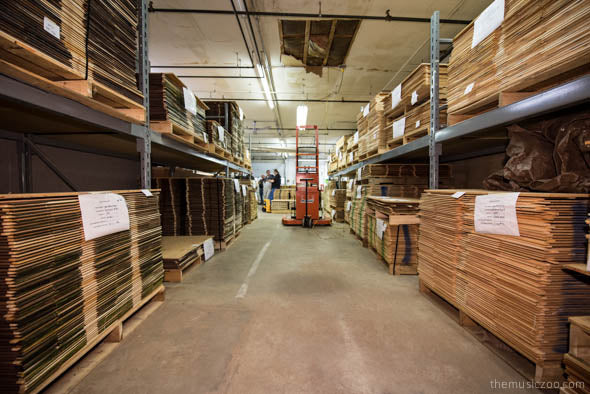

This is a mix of both red spruce and sitka spruce wood that will be used to make the braces for inside the guitar. In almost all aspects of building musical instruments, good hard wood is what you want. Red spruce (also known as Adirondack spruce) is usually very stiff, regardless of the width of the grain. Sitka tends to be less consistent, but still a good wood. Fender always uses red spruce for the all-important top bracing of a guitar, and on some more high end models full red spruce bracing is an option. Red spruce was the standard material before World War II for guitar building, but during the war the supply of it was depleted massively; it was used to build airplanes. 65 years later, Fender’s suppliers are so determined to find the best red spruce that they’ll drive around and offer to buy someone’s tree right out of their yard.
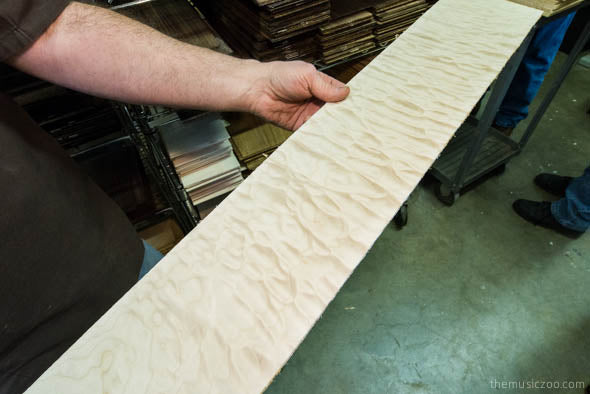
Really nice quilted maple is hard to come by, but here’s some gorgeous stuff. Fender’s got these choice pieces slated to become the sides of some upcoming Custom Shop guitars.
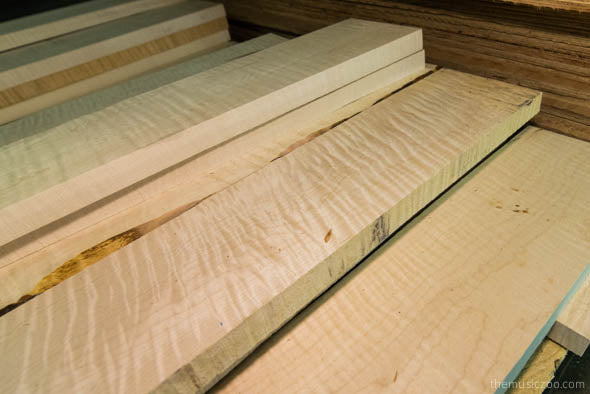
Here are some beautiful figured maple boards.
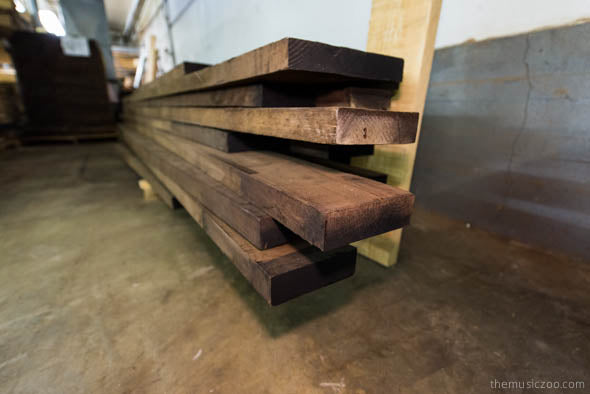
And this black walnut is typically used to make necks.
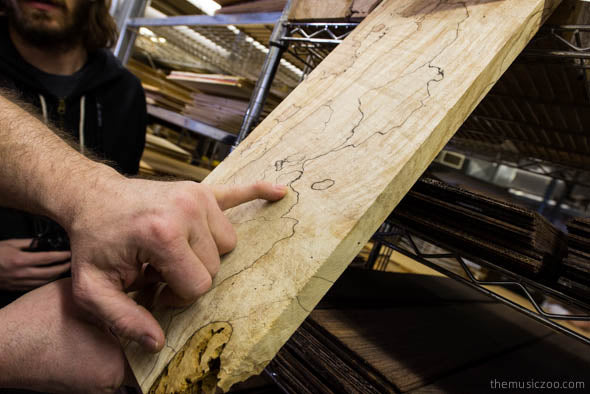
Here’s a big hunk of spalted maple. Darren explained that what they call “ink”, the black lines that make spalted look so cool, when sanded will really kick up your allergies if you’re allergic to mold.
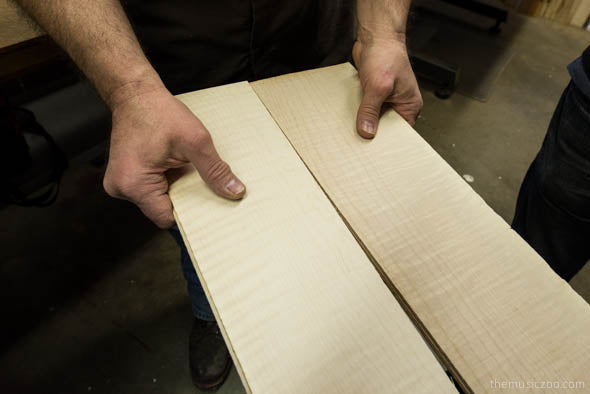
Check out the coloration difference between eastern red maple on the left and big leaf maple on the right. The eastern red is harder, brighter, and gives a cleaner, whiter look. The softer big leaf maple often has more figuring to it.

Here’s some cocobolo, which is available for custom guitars. It’s apparently “itchy” to work with, but damn it looks good! We immediately noticed this wood on the shelf because we thought it looked just like brazilian rosewood. Some of this figured cocobolo could really fool someone.
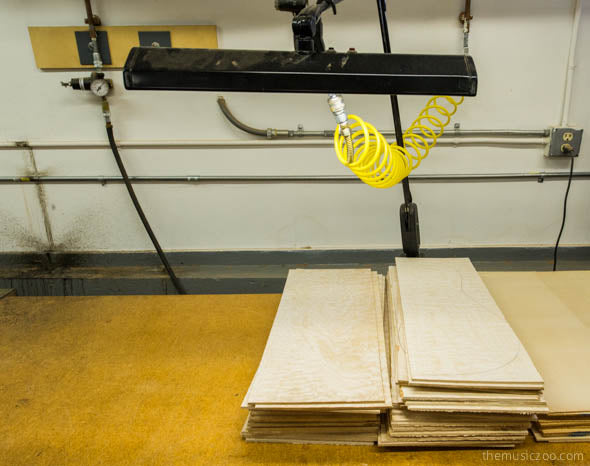
Matching woods is a big part of the job when figuring out just which pieces go together to make a good guitar. Darren told us that the woman who works in this area would be a real weapon at a casino because her memory is unbelievable. She organizes hundreds of pieces of wood for tops, backs, sides, fingerboards, and can photographically match pieces in her mind that might be buried in a stack on a shelf.
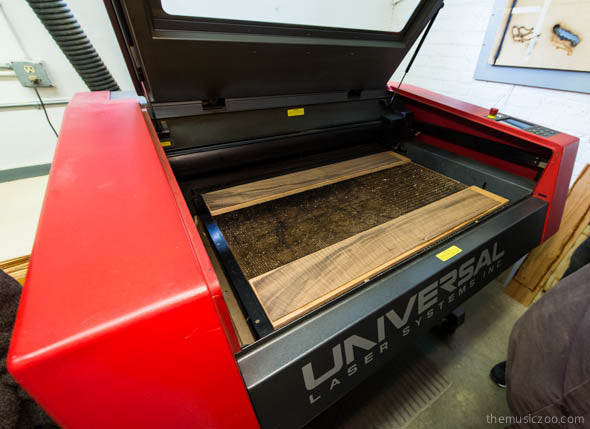
This laser cutting machine is used to cut out pieces of wood that will be used as guides later in the build process.
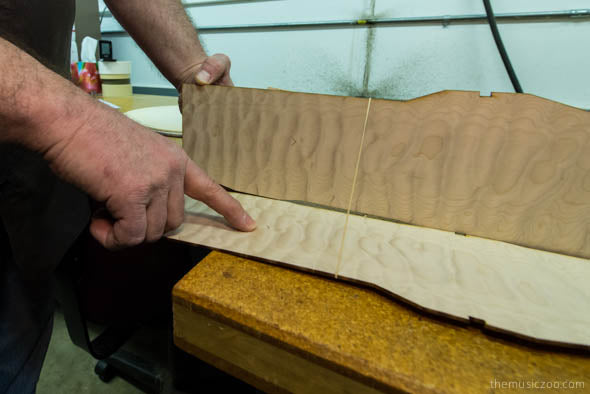
For example, this guide piece is cut to determine the dimensions of the inside of the guitar body, and provide some locations for things like internal components and bracing that will later be read by a CNC machine.

Some of the information lasered onto the wood aren’t just for measurement, they can also give the builders reminders of what the heck guitar they’re working on!
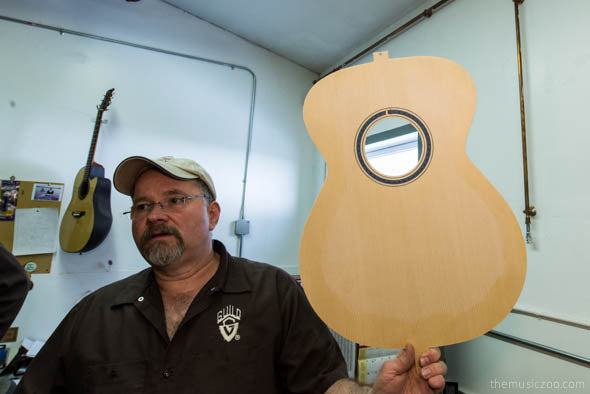
Here’s a top for one of the new Fender Custom Shop Acoustic models coming out this year. Notice the tabs still attached to the top. Those will be trimmed off later but for now will come in handy during the body assembly process.
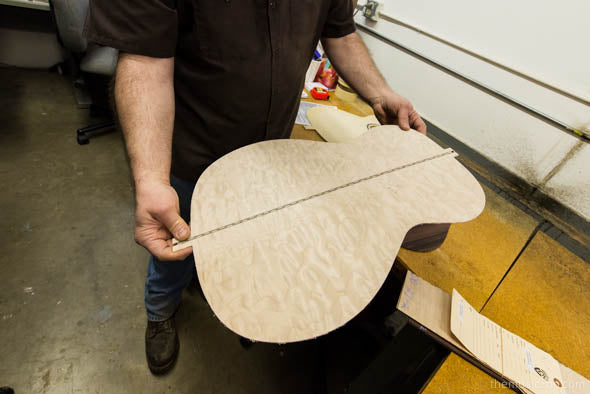
Here’s a guitar back that has been routed and had a decorative inlay installed. Traditionally when you see a strip like this running down the back of the guitar, there might be a two piece back glued together, hidden by the inlay. What Fender does is route a perfect channel down a one-piece back for the decorative inlay, no two piece back required!

Here’s a closeup of the inlay in the perfectly routed channel. Check out part two of the Fender Custom Shop Acoustic Factory tour, where we’ll get into tops, backs, necks, and frets!
Continue to part two



